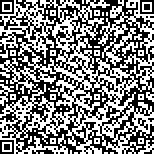| 摘要: |
| 在传统街道研究中,使用者与街道
间进行的信息传递往往被忽略,利用行为心
理学中使用者对于街道交往的可读的感知,
从而得出街道可读性的传递媒介。本研究选
取位于古都洛阳老城区的重要景区之一——
东西南隅片区四种类型街道,借助非语言符号
系统,构建了以使用者心理主观评价和认知
地图客观评价的街道可读性评价体系,通过
实地调研获取使用者对街道可读性的空间感
知,评价不同类型街道可读性的影响因素。结
果发现:对于商业型街道,视动符号因子、目
光接触因子与街区可读性呈正相关;对于生
活型街道,时空组织性因子与街道可读性联
系密切。老城十字街可读性评价最高,色彩
符号和空间氛围感是主要影响因素。 |
| 关键词: 非语言符号系统 街道 可读性 认知地图 |
| DOI:10.13791/j.cnki.hsfwest.20190108 |
| 分类号: |
| 基金项目:国家自然科学基金资助项目(51478057) |
|
| Survey and Evaluation of Non-Language Symbol-Based Street Readability—Taking Luoyang Old City As an Example |
|
TAN Shaohua,CHEN Luyao
|
| Abstract: |
| In traditional street research, the information transmission between users and streets
is often neglected, and the readable perception of street interactions by behavioral psychology is
used to derive the medium of street readability. In this study, four types of streets in the east and
west of the ancient city of Luoyang, one of the important scenic spots in the old city of Luoyang,
were selected. Based on the non-verbal symbol system, a street readability evaluation system
based on subjective evaluation of users’ psychology and objective evaluation of cognitive maps
was constructed. Through field research, the user’s spatial perception of street readability is
obtained, and the influencing factors of different types of street readability are evaluated.
The paper utilizes literature review combined with interview questionnaires to obtain
reliable subjective perception factors and subjective factors that describe the user’s perception of
street readability, and ensures that these factors provide a more comprehensive overview of the
user’s more stable perception of street production and the existence of street readability. By using
questionnaires, observation records, interviews and literature review, this paper selects objective
elements for street readability, mainly based on the user’s non-verbal symbol system, and
combines certain literature to obtain street-readable objective. The evaluation elements, with the
help of Mr. Sun Shijin’s classification of non-verbal symbol systems in “social psychology”, uses
non-verbal symbol systems combined with street environment features to classify street-ready
optimistic evaluation elements. The subjective and objective methods are combined to construct
the evaluation system of street readability research. On the one hand, the subjective cognition
of humans is used to measure the readability of the street, and on the other hand, the perceptual
substances of different streets are obtained through the cognitive map method. Environmental
characteristics summarize the material and environmental characteristics of the street. The study
uses a two-way evaluation to find out the relationship between the two to make recommendations
for a readable street space design. The survey object selects the east-western area of the old city,
which is one of the important commercial districts of Luoyang City. It is also the most attractive
scenic spot in the old city of Luoyang. The streets are rich in forms; the walking frequency is
high and the attractions are dense; pedestrians are rich, including local residents, local tourists,
and foreign tourists. Using the different ages, experience, and occupational differences of the
respondents, the survey results are more extensive and popular. During the investigation, the
pedestrians in the old districts of Luoyang, Dongyang and Nanyang were used as the evaluation
subjects, including tourists and local residents (including business households). Forty-eight ofthem were interviewed and 52 local residents were interviewed for semi-structured interviews.
For the study of the middle street in the old city of Luoyang, it is found that for commercial streets, the visual symbol factor and the eye
contact factor are positively correlated with the readability of the street; for the life-type street, the spatial and temporal organizational factors are
closely related to the street readability. Cross Street has the highest readability, and color symbols and spatial atmosphere are the main influencing
factors. Corresponding improvement measures are proposed for the current situation in the four streets of the old city. First of all, local symbols are
integrated into the street, such as the continuation of the culture, and palace lanterns may improve the color recognition of the street. Local features
can be added to the space atmosphere, such as cultural theaters, figure statues, etc. Secondly, the bottom layer can be added to the building facade.
Provocative and courtyard space may increase users’ gaze lingering. Thirdly, leisure space can be added to the open space, such as increasing the
seat. Fourthly, in the aspect of the sound atmosphere, more attention should be paid to the utilization of music to improve the street’s user experience.
The research shows that the visual symbol factor has the most direct influence on the readability of the street. On the subjective perception level,
it mainly affects the user’s comfort, richness and interaction. The eye contact factor plays an important role in the readability of the street. The role of
eye contact system mainly affects the user’s sense of richness and comfort at the subjective perception level; the space-time organization factor is the
basic guarantee of street readability; the auxiliary language factor has a certain degree of auxiliary influence on street readability, mainly affecting
the pleasure of the street.
The material space elements in the non-verbal symbol system affect the subjective perception of the user in terms of morphological perception.
They are also important carriers for street readability, which can enhance the attraction of the street, and try to introduce the “non-verbal symbol
system”. In the study of the street, the paper uses the characteristics of the non-verbal symbol system to extract the material elements in the street
as objective evaluation elements, and combines with the subjective perception of street users and comprehensive and in-depth discussion of the
influence of non-verbal symbol elements on the street readability of the street. It may provide reference measures and suggestions for the renovation
and protection of traditional urban commercial districts for the future street renewal design. |
| Key words: Non-Verbal Symbol Systems Streets Readability Cognitive Maps |


